2018 Yamaha EBikes First Ride Review
There was some discussion as to whether Motorcycle.com should even cover eBikes, an indecision that got thrown out the window when we realized we were talking about not just any bicycle builder, but Yamaha – and also that we had the opportunity to have the inimitable Mark Cernicky sample the four new Yamaha eBikes on MO’s behalf. Long before he became the guy who starred in all the Cycle World hero shots and videos up until a few years ago, Sir Nicky was a pro skateboarder and BMX guy.
Also, if it’s got two wheels and at least some propulsion, we’re interested. If you’re not please feel free to scroll to the next article. —Ed.
Boning the nose down to land on the steep transition face, I bonked the lip of the entry with my front wheel, and down I went flat on my face. While I dirt napped with skin from my upper-lip flapped over my mouth, as I bled from fresh divots in my brows my sunglasses had made upon impact, an oven timer rang, Bing! Waking from this dirt-lot daydream I was a little boy and asked, “Momma, are the cookies done?” As I rolled over with my new black eye, the kids surrounding me, including my own five-year-old son, were aghast… and there were no cookies, my momma was gone! Just blood, sweat and the jeers of beguiled kids…
That’s the last time I remember riding a mountain bike. Lately, I haven’t spent nearly enough time riding nice bicycles – let alone ones with motors. So, I was super stoked when my MO bros gave me this e-ticket invitation for the first ride on Yamaha’s 2018 four-model lineup of pedal assist bicycles. Introduced at Interbike 2017, Yamaha announced its intention of entering the US eBike market with four completely new models: Urban Rush, Cross Connect, Cross Core and YDX TORC. In case you hadn’t heard (I had no idea), Yamaha claims to be the biggest manufacturer of eBikes in the world; it’s sold over 4 million “drive units” in the last 25 years and almost that many bikes.
Riding a power assisted eBike is just like riding a bike. Start pedaling and you take off like you have a strong tailwind blowing your way wherever you’re headed. You get to choose how hard you want to work: To sweat or not to sweat, that is the question… you answer it by toggling your selection of assistance with your left-thumb instead of holding it out to hitch a ride. It’s not magic, it’s electric!
One fully charged lithium ion battery, shared by all four models, means up to four hours of assistance pushing us forward in our understanding of this unfamiliar category. Familiarity began with command of the controls that are the same on all four models. With a thumb-actuated-trigger you can scroll up and down through the options on the multi-functional LCD display. Power levels are visibly cued with colors associated to the four or five (on YDX TORC) assistance levels, making it even easier to make selections when on the move. Yamaha’s tough multi-functional display mounting system can be moved to further optimize the rider’s optical reference preference. Vitals displayed on screen include: remaining battery percentage, speed, average speed, max-speed, odometer, trip-distance and mph. The LCD screen was easy enough to read in our relative test conditions and in the variety of mount positioning associated with each model. Attach a mount for your phone and there is a micro-USB port to accommodate charging. Let us pedal.
Cross Core $2,399
I was assigned a Cross Core (Edgy, Stylish, Fitness Focussed says Yamaha) in size medium on our first stint. Flat grips on flat bars spread the load on the hands, while variable crank arm lengths are a nice touch in accommodating rider-reach-triangles on small, medium and large frame sizes. Comfortable as we set-off, I toggled through power settings ECO+/ECO/STD and HIGH before sticking with ECO to become familiar with the rules of engagement. Keep in mind, it is a bicycle, there is no throttle – just pedal and the 3P system considers wheel speed, gear position and Nm of torque being applied at the crank to gauge assist. And there is a sweet-spot, a HELP ME cadence where motor output is maximized. Pedal too hard over 110 rpm, or exceed 500 Wh, and the PW SE series motor will let you go it alone.
As a measuring stick we stopped at the base of a short but pretty steep paved climb. When turning the system off, to establish a baseline climb, it took the lowest cog-combo of the Cross Core’s 18 speeds and some grunting to get to the top. The second attempt was taken in the High assist setting, and on this pass I was able to remain in the taller of the two front sprockets and practiced wheelies to get a feel for the Shimano manual disc brakes. The third climb saw me switching between ECO and STD, where I found the biggest step in assistance levels.
As a matter of fact, that step-up in assist had me briefly sniffing a waft of fresh cookie dough: Just after shifting from ECO to STD, while wheelying gently along balanced and not pedalling, I needed to begin pedaling again to keep the bow up. Unfortunately, my initial pedal pressure (one of the 3 P’s the ECU measures) was heavy enough to cause assist to come on stronger than expected, and there I was once again, flying supine just before touchdown flat on my back on mother asphalt. Haven’t we met before?
As I lay there, I had time to appreciate that at least I wasn’t sweaty, and to contemplate how much wider the bike-to-work margin will grow with the eBike. These things are great, and are going to allow more people to consider commuting by bicycle with no sweat and without the huffing and puffing. Most of them will keep both wheels on the ground.
Urban Rush, $3,299
Urban Rush (Weekday Speed Adventurer!) was the second bike I rode on the same loop for comparison sake. Black is the single-color option on the Rush, lucky I like black. Plus, I was pleasantly surprised by the broad-ish top-tube of the drop-bars. It was a bit of a reach to the charming alarm bell, used to pay pleasant heed to pedestrians we passed. The Urban Rush felt smooth at its 20-mph assisted top-speed, and another surprise came from added bump absorption via bigger eBike-specific cyclocross-type tires.
The front-wheel did flop-over into turns at a slower pace. Pleasantries continued when I was told on the pedal back that the pannier rack, with integral taillight and fenders seen on the Urban Cross, could be mounted on the Rush and Core, after removal of plastic panels covering the mounting points. I spent much of the short time I had on the Urban Rush imagining it kitted up with accessories, how it could be used to get around town and how far the Rush could be ridden. Range varies with terrain and assist levels, but reportedly up to four hours.
Cross Connect $2,999
There was very little time left before lunch to sample the Cross Connect (Urban Utility, Adventure, Recreation all in one! says Yamaha), but the notable difference is the 75mm adjustable air fork versus the one-piece aluminum fork used on the Cross Core and the Urban Rush. I did like the fact the CC comes standard with a rear pannier rack wired with integral tail light to go with its 200 lumen headlight, fenders and kickstand. Cross Connect also has all the Yamaha assist features like the 3PW sensor interface with the four optional power settings, Shimano drivetrain components and manual disc brakes integrated into a utilitarian’esq e-motorbike poised to get you to work on time or back and forth to the store in no time.
YDX TORC Mountain Bike $3,499
With afternoon came the pièce de résistance, the YDX TORC mountain bike. Equipped with Yamaha’s Interbike Innovation Award winning PWX motor, which is overall 30% smaller than the PW SE on the other models and nearly a pound lighter. Add in an additional assist level – EXP – and you’ve got five on this moto model. Another positive addition comes by way of upping cadence support to 120 rpm and 10 more Nm of torque – bringing your total to 80. Losing one front chain-ring leaves us with 1 x 11 final drive ratios.
We hard-tailed it out of the Lakehouse Hotel in San Marcos, California, after lunch, forks locked out on the road ride, buzzing with anticipation of getting in a good trail ride. In (STD) we put miles of pavement behind us, including uphill grades, to get to the dirt no sweat. Naturally when we turned onto the trail we wanted to be as quiet as our pedal-assisted e-motorbikes, but I couldn’t contain a few joy-whoops as we flowed through some natural trail splendor, climbed hills and danced through rock gardens. On level ground and downhill sections, I went from ECO+ to ECO assist modes with hydraulic Shimano SLX disc brakes to handily slow the YDX from high-speed descents to enter tight technical switchbacks. The Yamaha YDX chassis handled my test-terra-rone with ease, whether I was rebounding off rocks, landing jumps or railing turns – the YDX TORC was a blast to ride.
The only glitches I experienced was over-revving the assistance on some rocky technical climbs where just when we needed even more e-power, it signed off. In a couple sections I took a second go in a taller gear with a better result, even though I was not stoked on the entry-speed required to maintain momentum through the rest of that section. If I tried a third go, I would have tried shifting in the middle. I’m sure with more familiarity this would get easier to anticipate assist engagement. This action also led to my appreciation of being on the right size (medium) chassis and its kinda-weird looking kinked upper frame rail, which lets you put your feet down without racking the 8-balls. In the same regard, the aftermarket Bluetooth dropper seat-post Yamaha had fitted for my test ride saved me from getting hucka-buckt over the bars to facetime in the rocky section.
On the long road hillclimb hotelward with dinner to grab at the end of the ride, I had my chance to try the YDX’s extra high EXP boost setting. After hours on the trail, the extra kick was definitely a nice option to have in the bag. The beauty of the eBike (especially this one) is the ability to ride hard all day and still make it home with some life in your legs and lead in your pencil.
To think that I’ve been testing motorbikes for decades and hadn’t heard anything about Yamaha having sold one, let alone more than four-million eBikes and counting for 25 years, it’s hard to comprehend Yamaha’s failure to communicate? What I do understand now is, besides an RZ500, OW-01, FZ750 and a few others… I’m adding the YDX TORC to my dream team. I feel like I’m ready to hit the trail again, hopefully not with my face. Momma, are the cookies done?
2018 Yamaha eBikes
+ Highs
- Twenty-five years of experience manufacturing e-bike power units is most likely why Yamaha offers a three-year warranty.
- Aluminum frames are available in three sizes with corresponding frame tube thickness to enhance ride quality.
- Multifunction LCD display was easy to see and simple to operate.
– Sighs
- Looping out.
- YDX TORC could use an even better front brake with more power and less sensitivity to facilitate better 20-mph stoppies.
- YDX TORC needs a standard dropper seatpost.
All the details are over here at Yamahabicycles.com.
More by Mark Cernicky




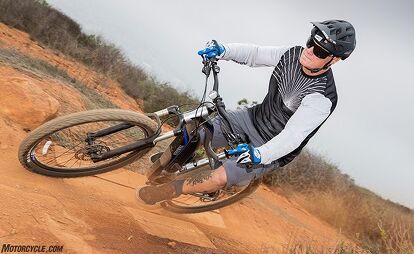




















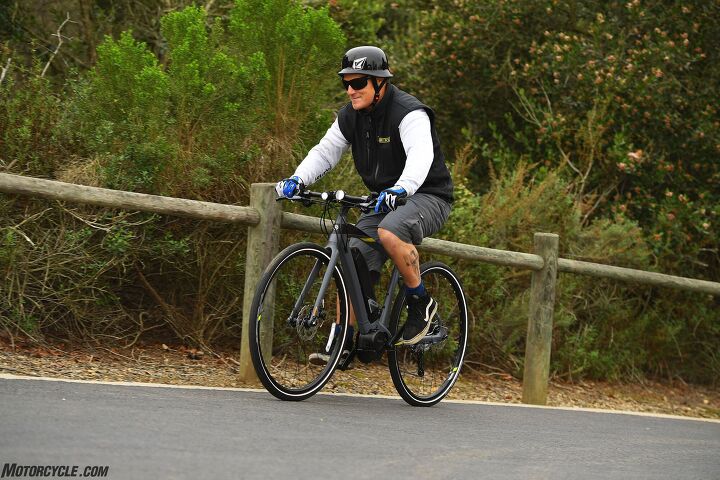
















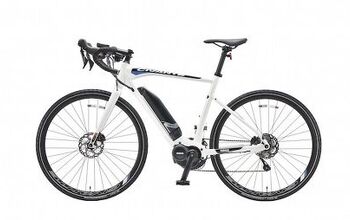
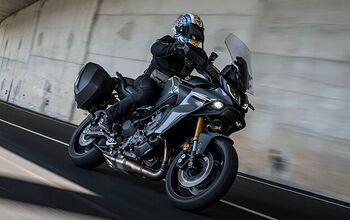
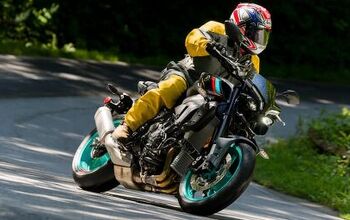
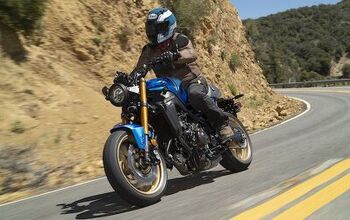
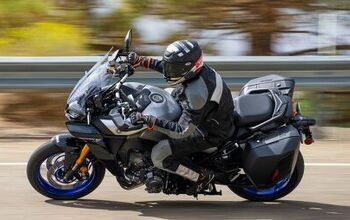









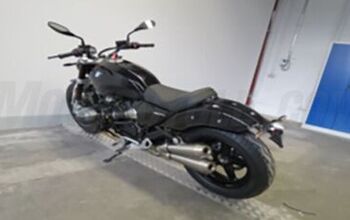


Comments
Join the conversation
Too rich for my blood. I'm sure they are great ebikes, since they are Yamaha's.
Yamaha's 'failure to communicate' continues on, even with the new introduction of a line of ebikes. They launch to dealers, yet no public reviews, nothing on EBR, and no marketing whatsoever. The arrogance is mind boggling. They are so good, that no one needs to 'know' about them.